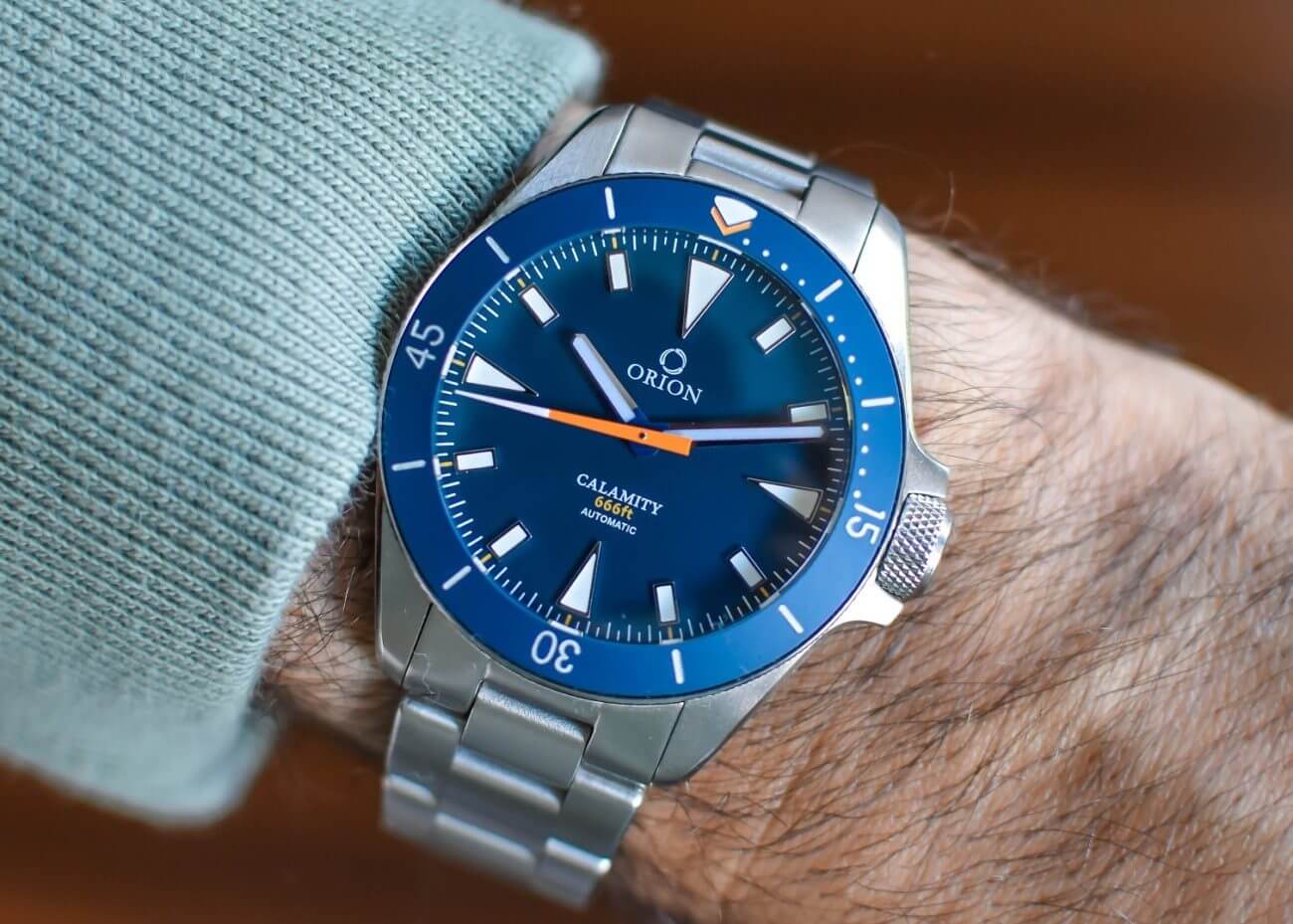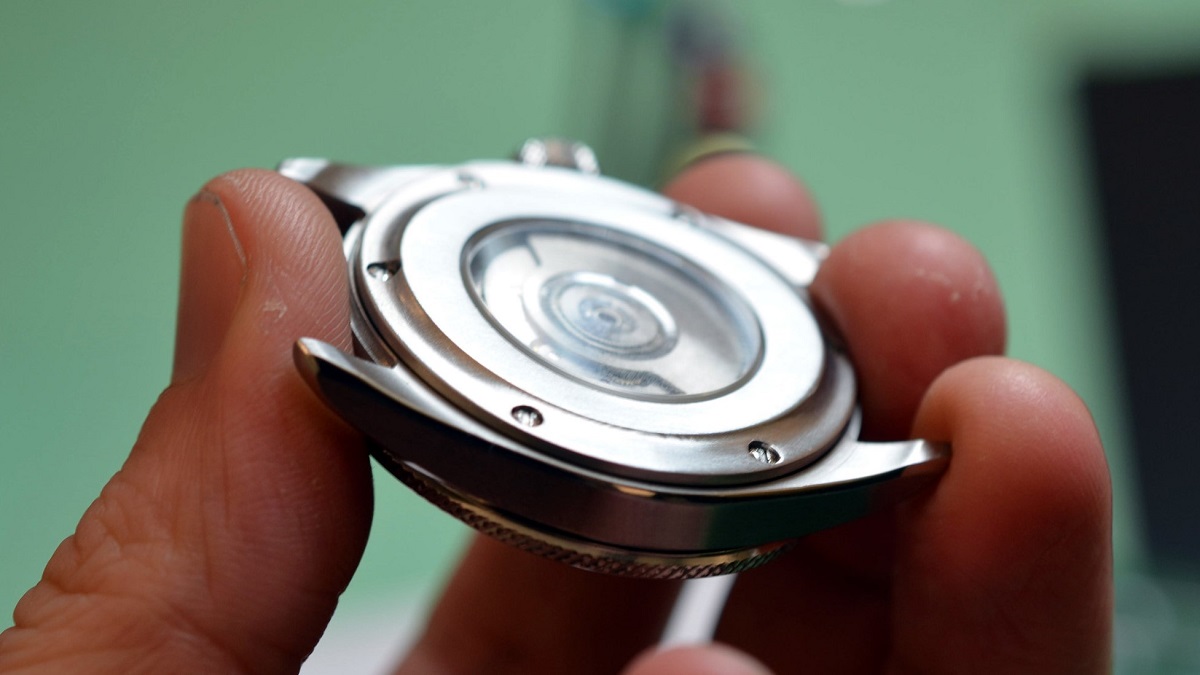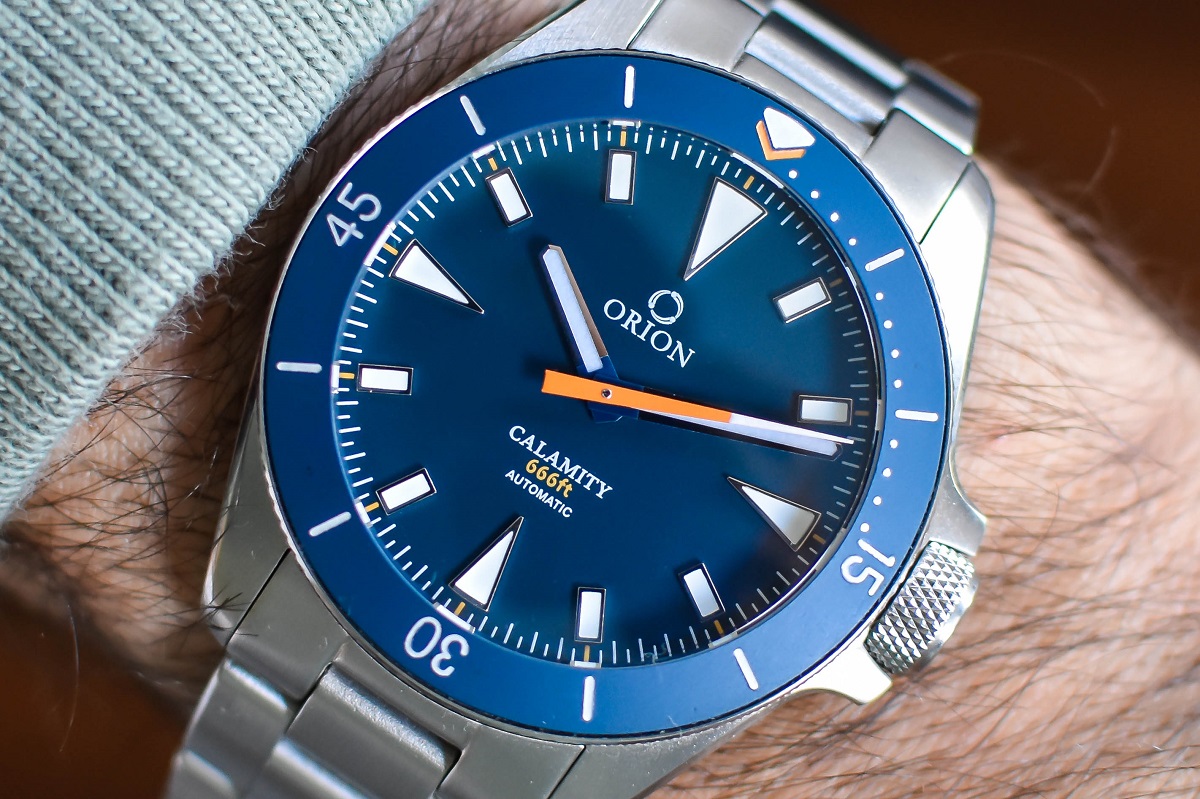
These days it can be difficult to make an argument for the existence of more dive watches. That’s the bottom line. Sometimes it’s hard to see the point and between what the big brands are offering and the constant wave of ambitious Kickstarter start-ups, it all just seems like pointless noise after a while. What I am interested in, however, is seeing smaller brands work towards overcoming new challenges in a saturated marketplace – and it doesn’t get any more crowded than the space occupied by affordable dive watches. By this time in mid-2018, I’ve handled my share of interesting dive watches but to me, none of them were as entertaining or as pleasing to wear as the Orion Calamity; a quirky, stylish, and incredibly comfortable diver designed right here in my back yard.
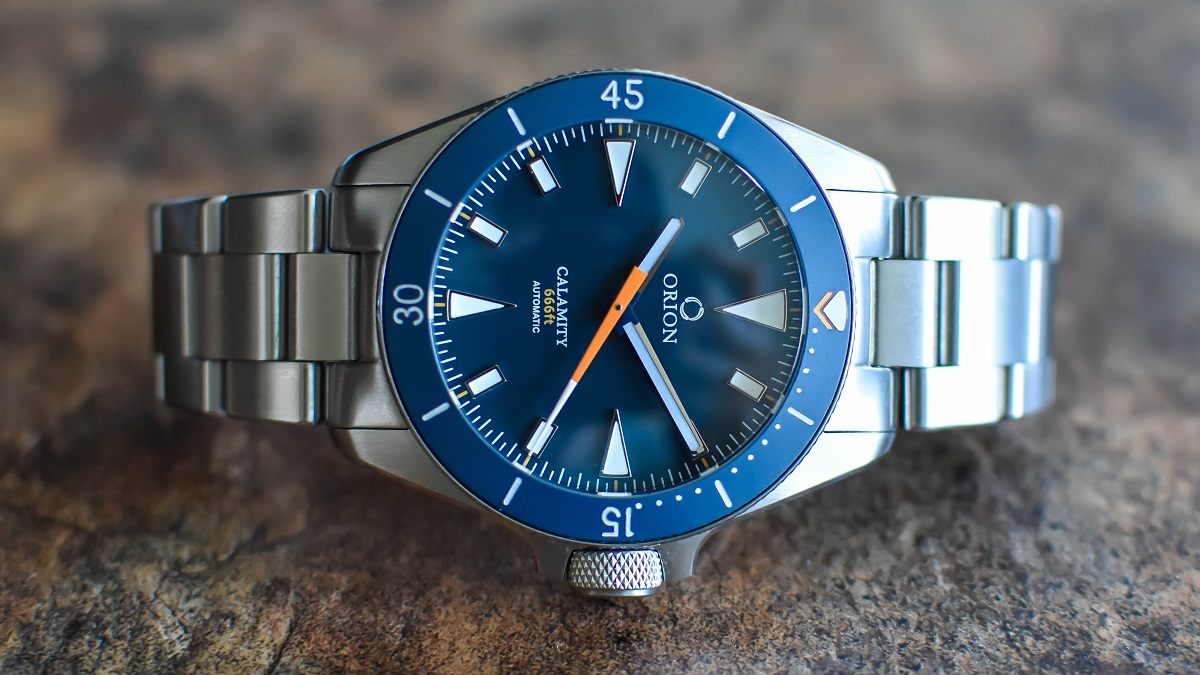
Nick Harris is a Seattle-based watchmaker and founder of Orion Watches, which is his latest horological venture. During what I would call the Watch Modding Renaissance, Harris established himself as the preeminent American resource for Seiko mods alongside other popular names like Dagaz and Yobokies. It wasn’t long before he decided it was time to move on, create his own designs, and play a part in what he hopes could become an American watchmaking revival. The thought is almost laughable to some, I’m sure. But as far as that reality may seem, I can’t help but hope for a new age of American watchmakers. That said, the Orion Calamity is a very, very small step in that direction but one I’m happy to have witnessed and experienced firsthand.
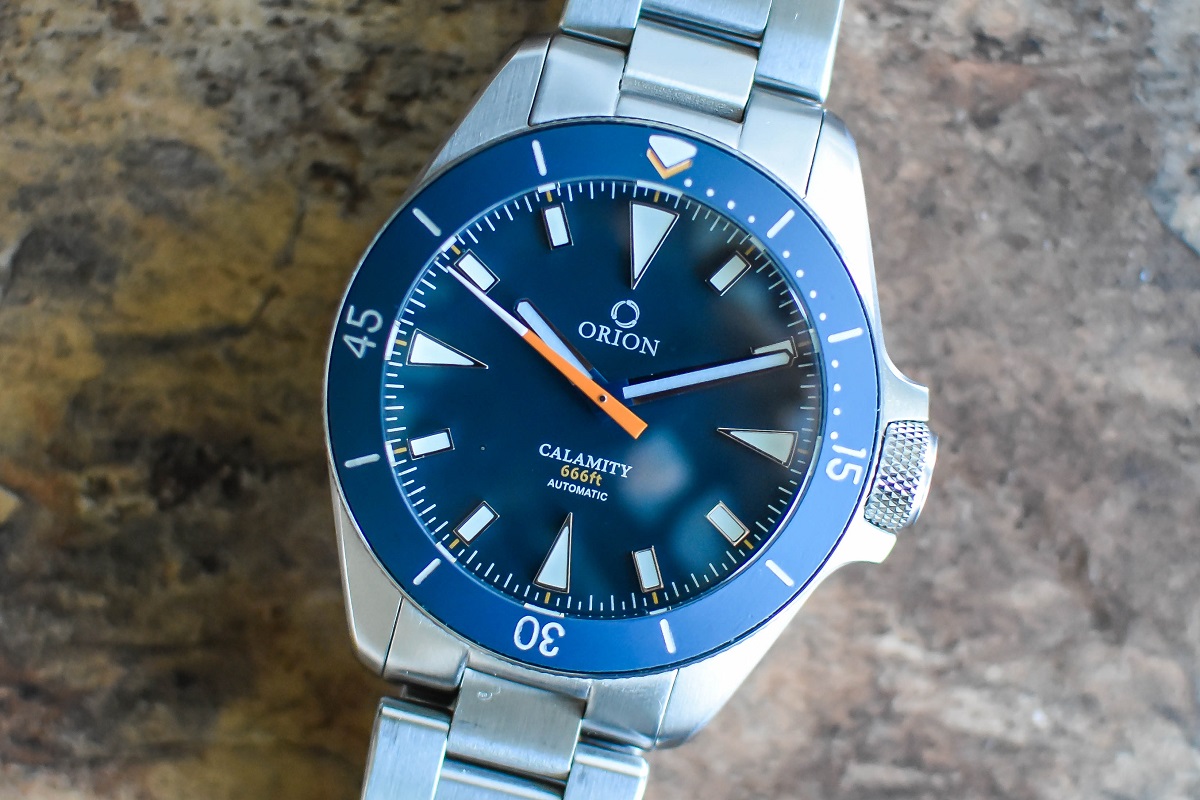
Case
Too often, young startups take the plunge into watchmaking by simply hashing out a half-assed product with Frankensteined parts bin components. After initially inspecting the case work on the Orion Calamity, I quickly learned that I was dealing with something at the complete opposite side of that spectrum. Every angle and polished edge has been accounted for, from scratch, and carefully designed by Harris in collaboration with his manufacturing partners. Every component proudly takes its place with a tight fit and the end result is something that comes in several notches above the typical quality observed in microbrand products.
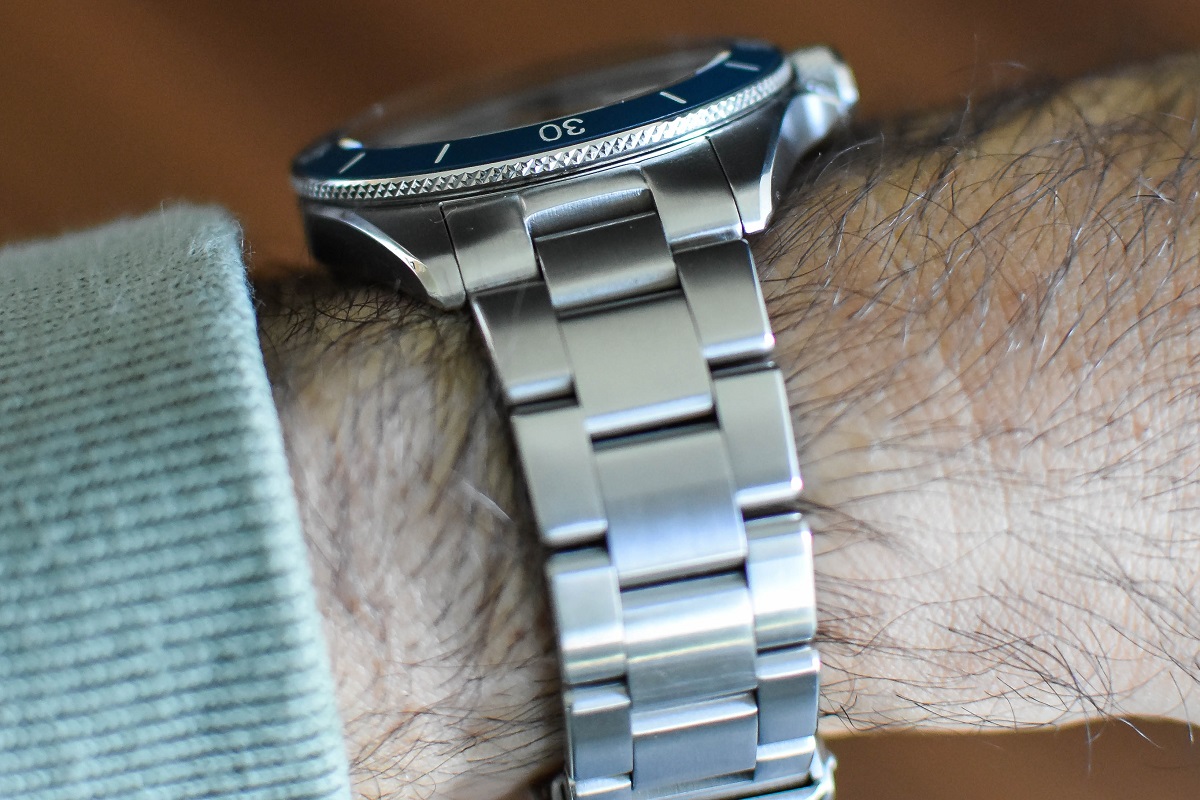
The first thing most people will notice when strapping the watch on is the dramatically contoured caseback design. It’s almost as if a significant chunk of sapphire and metal was scalloped (luthier style), making way for a comfortable fit most people probably wouldn’t expect in a dive watch. The feeling is almost best described by imagining that the watch is sitting on top of a soft pocket of air right above your wrist. This design also means that the 40mm stainless steel case tapers in thickness between 10.5mm and 11.3mm, which makes for a very dressy and versatile dive watch experience. For reference, the Tudor Black Bay Fifty-Eight announced at BaselWorld 2018 comes in at 11.9mm but in some ways, I almost prefer the more contemporary approach taken with the Orion Calamity.
Lug-to-lug size is also reasonable at 48mm and the Orion Calamity is water-resistant to 666ft (perhaps a not-so-subtle tribute to Bulova “Devil Divers” from the 1970s). Lug width is 20mm and although I’m typically a strict bracelet guy, this watch seems like it would be fun to mix and match straps with. The polished bevels run through the entirety of the case sides and even along the characteristic Orion crown guard – a cool Nick Harris signature at this point when paired with the massive, knurled screw-down crown. These subtle touches all converge upon a pleasantly executed diver’s bezel with luminous markings and a very cool chevron marker at 12 o’clock.
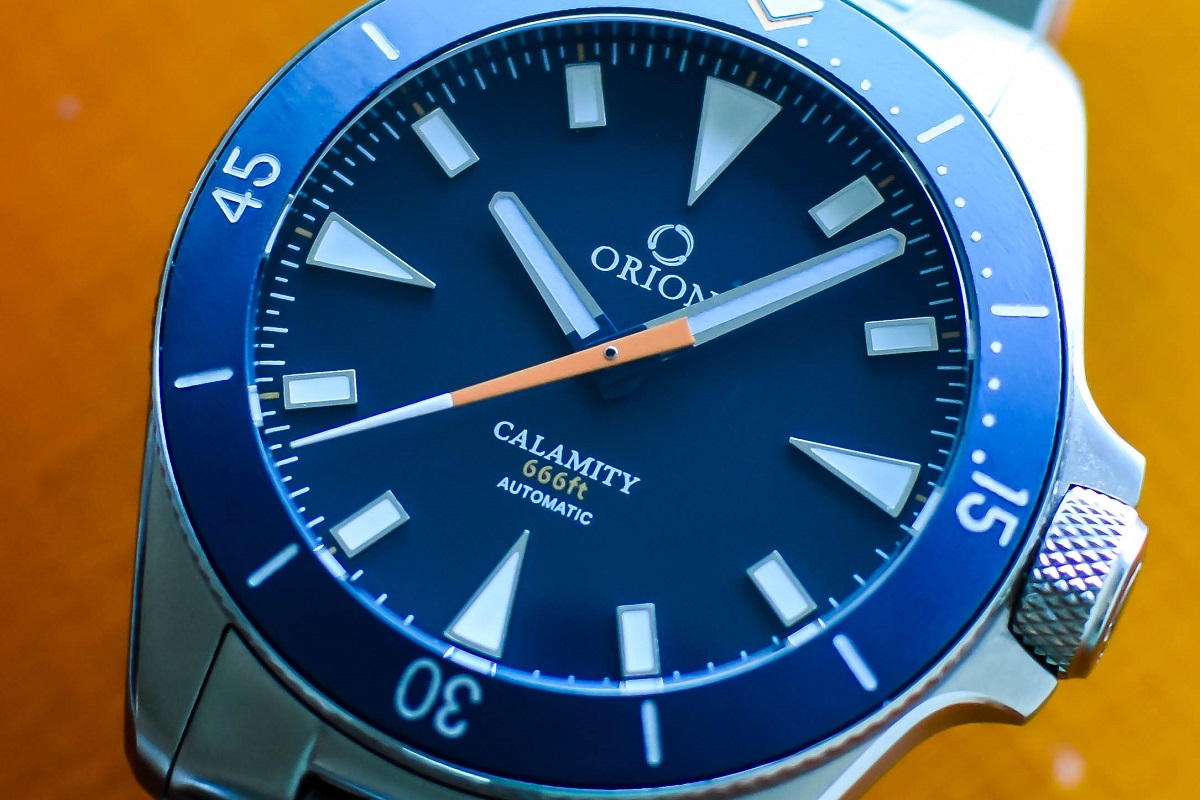
Dial
Like any good dive watch, the dial is kept simple and symmetrical. Each marker is applied and possesses a degree of polishing that makes the watch both playful and legible in varying degrees of light. At 12, 3, 6, and 9 o’clock sharp triangular markers create a sort of crosshair pattern while aiding legibility, and the dial itself appears to have a soft matte blue finish. The color is one of my favorite traits, and it can vary between something along the lines of a light aquamarine tone to a darker “lake placid blue” shade (one of my favorite late ’50s Fender guitar finishes).
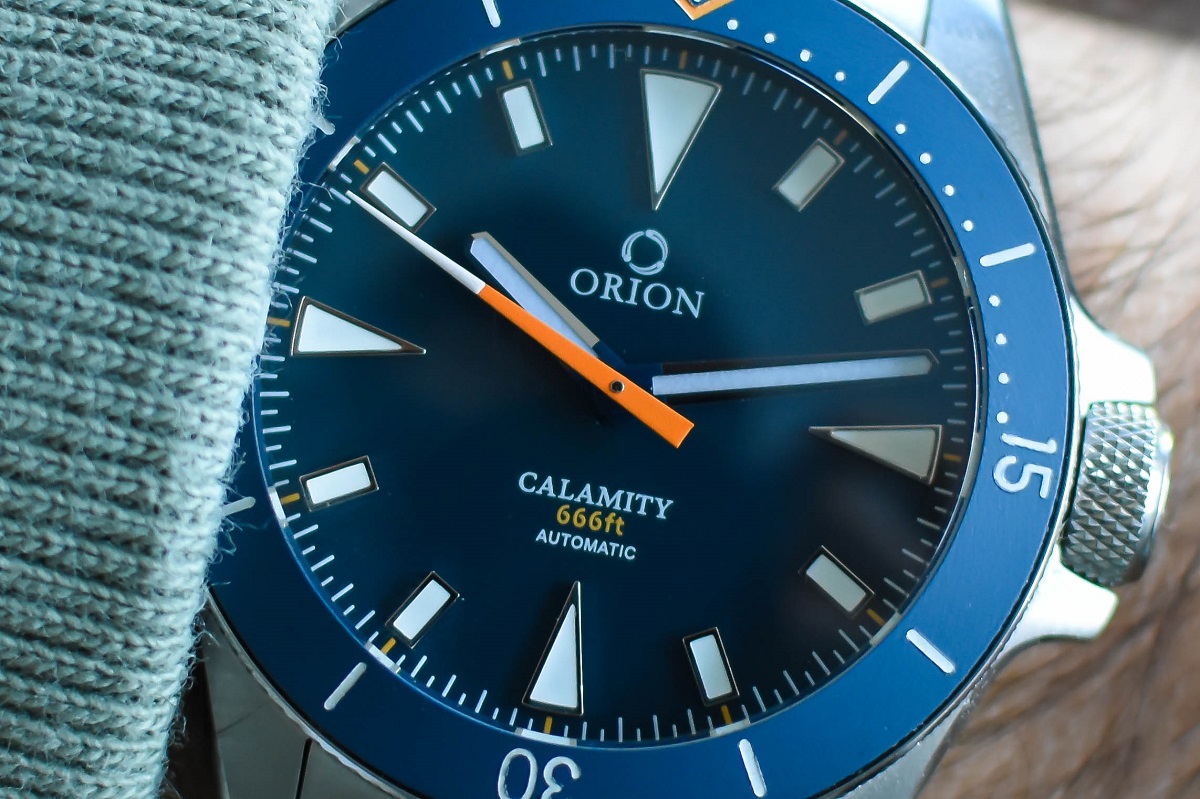
Much like the dial, the bezel features the same matte finish but is in fact, ceramic. The orange ticks along the minute track, the bezel chevron, and the large orange seconds hand are the only other spots where you’ll see a contrasting pop of color. I found the seconds hand particularly playful in this context, since it appears to look like something straight out of an old Heuer racing chronograph. Other dial appointments include BGW9 Super-LumiNova, large broadsword hands, and a protective double dome AR-coated sapphire crystal.

